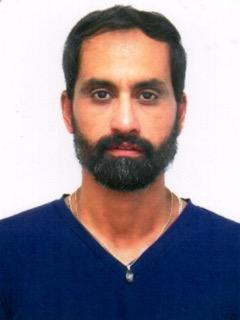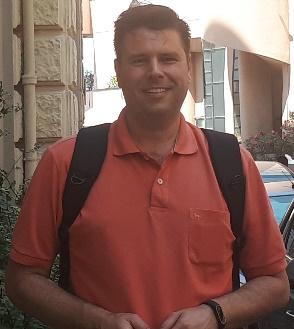Author: Sérgio Roberto Andrade Dantas 1. Briefs about your research The application of photocatalytic processes to buildings surfac...
The application of photocatalytic processes to buildings surfaces began in the early 1990s, and this technology developed rapidly with construction materials, such as ceramic tiles, paving-blocks, glass, paints, and concrete pavements, besides in finishing and coatings for air-water purification. TiO2 nanoparticles have attracted much attention as photo-functional materials for self-cleaning, antifogging, self-sterilizing, and antibacterial effects attracting many industrial interests due to the advantages of using these particles in building materials. This electrochemical process accelerates the oxide reduction reactions of organic compounds by the incidence of solar radiation. This technique creates self-cleaning surfaces that neutralize the effects of environmentally polluting substances. The external surfaces of buildings as paints and inorganic coatings when containing a photocatalyst material could provide a surface with hydrophilic characteristics decreasing the degree of dirtiness on these surfaces. These facades could be washed by the rain orwater spray, promoting a self-cleaning effect. Thus, heterogeneous photocatalysis has also opened up opportunities not only in studies about environment decontamination but also for producing self-cleaning materials.
This research is part of the Ph.D. thesis conducted to evaluate the influence of the granulometric and morphological distribution of n-TiO2 particles in the properties of coating mortars. The photocatalytic process is influenced by several factors, such as the mortar characteristics, the proportion of the components of the mixtures, n-TiO2 mixing procedure, physical/chemical (morphology) characteristics of n-TiO2 and the application procedure on a subtract. The n-TiO2 content added to the cementitious materials to activate the photocatalytic process and the photoinduced superhydrophilicity phenomenon, through the activation of the n-TiO2 semiconductor, has already been discussed by many authors. Conclusive results with different n-TiO2 content were already discussed in various studies. However, the procedures used for addition to cement mixing, as well as the application on the substrates, are still subject to several investigations.
The research was done based on results obtained in previous studies of the author - The effectiveness of TiO2 additions to mortar to maintain initial conditions in terms of its reflectance to solar radiation (https://doi.org/10.1590/s1678-86212017000300161.) and guided the methods and proportions used to produce thenew mixtures.The results of reflectance to solar radiation and color perception were already obtained in the evaluation of the different n-TiO2 contents added to the coating mortars are presented inthe paper - Photocatalytic Performance of White Cement Mortars Exposed in Urban Atmosphere
(https://globaljournals.org/GJRE_Volume19/1-Photocatalytic-Performance-of-White.pdf).
In this study, it was observed that the higher content of fines added to the mortar mixtures presented problems regarding the work ability. The higher water content added resulted in a higher porosity. Besides, it was also observed a high drying shrinkage in the mortars during the initial months of exposure in the urban environment that affected severely the performance of mortars.The results obtained showed the need for better characterization of the fresh and hardened state of the mortars besides studying the effect of the addition of polypropylene microfibers to the mixtures, to reduce the drying shrinkage.
(https://globaljournals.org/GJRE_Volume19/1-Photocatalytic-Performance-of-White.pdf).
In this study, it was observed that the higher content of fines added to the mortar mixtures presented problems regarding the work ability. The higher water content added resulted in a higher porosity. Besides, it was also observed a high drying shrinkage in the mortars during the initial months of exposure in the urban environment that affected severely the performance of mortars.The results obtained showed the need for better characterization of the fresh and hardened state of the mortars besides studying the effect of the addition of polypropylene microfibers to the mixtures, to reduce the drying shrinkage.
Tests were carried out to evaluate the dispersion of the polypropylene microfiber in the mixtures. The addition of these microfibers aims to avoid the drying shrinkage effect that commonly occurs with the coatings during their cure to the hardened state. It was tested to add the polypropylene microfibers to the mixtures, before the addition of the powder material. The tests and the results obtained for each mixture are presented in - Influence of polypropylene microfibers (PPMF) dispersion procedure on fresh and hardened rendering mortar properties
(http://dx.doi.org/10.1590/s1678-86212020000200384).
(http://dx.doi.org/10.1590/s1678-86212020000200384).
The polypropylene microfiber addition studies were done to reduce the effect of drying shrinkage and showed the importance to study the procedure of adding and dispersing in kneading water. New blends were produced with the addition of polypropylene microfiber and n-TiO2 in its cement matrix. The influence of n-TiO2 addition procedure in the cementitious matrix in the process of agglomeration, drying shrinkage and other mechanical properties of mortars were studied. The methods used and the results obtained for each type of mixture tested is presented in - Influence of the nano-TiO2 dispersion procedure on fresh and hardened rendering mortar properties (https://doi.org/10.1016/j.conbuildmat.2019.04.190).
2. How much time did you spend to complete this work? /
3. Who/What inspired you to research on this topic and over what time?
3. Who/What inspired you to research on this topic and over what time?
The interest came during a class of Integrated Urban Sanitation Systems of the master's course in 2014. Since then, the research has been developed studying the potentialities and possibilities of different uses of these nanoparticles in materials and components surfaces. The study is going on towards the presentation of more assertive results in the next two years regarding the procedure for using n-TiO2, which is by addition and/or application and its effects in the reflectance to solar radiation and luminous.
4. Any personal experience or suggestions or ideas for future works in this field?
This study, show there is a large research field for the use of n-TiO2 in cementitious coatings, regarding to its crystallography, size, dispersion of the nano particles, and application procedure of n-TiO2 in coating mortars.It is of high importance the study about the influence of n-TiO2 addition procedure in the cementitious matrix because the tests showed agglomeration, drying shrinkage and other mechanical properties on the mortars in the tests. The methods used and the results obtained for each type of mixture tested is presented in - Influence of the nano-TiO2 dispersion procedure on fresh and hardened rendering mortar properties.
5. Your publishing experience with Global Journals (optional).
This was my first experience with Global Journals and it certainly won't be the last. The whole team was very solicitous and competent from the beginning of the process until the publication of the article. So, I don't want to mention names but congratulate the team as a whole.
7. Short autobiography, a biography of co-author and research guide.
 Sérgio Roberto Andrade Dantas Graduated in Architecture and Urbanism from the University Nove de Julho (2002). Specialization in Buildings: Construction Excellence and Anomalies from Mackenzie University (2006). Specialization inHistory of Art from FAAP University (2014) and Professional Master in Housing: Planning and Technology from Technological Research Institute of the State of São Paulo (2016). He is currently a Ph.D. candidate in the Department of Civil Construction Engineering by Escola Politécnica of the University of São Paulo. Experience in civil engineering at construction processes and project and construction management. Works as a founding partner of Enjoy Architecture and as a professor of Architecture and Civil Engineering course.
Sérgio Roberto Andrade Dantas Graduated in Architecture and Urbanism from the University Nove de Julho (2002). Specialization in Buildings: Construction Excellence and Anomalies from Mackenzie University (2006). Specialization inHistory of Art from FAAP University (2014) and Professional Master in Housing: Planning and Technology from Technological Research Institute of the State of São Paulo (2016). He is currently a Ph.D. candidate in the Department of Civil Construction Engineering by Escola Politécnica of the University of São Paulo. Experience in civil engineering at construction processes and project and construction management. Works as a founding partner of Enjoy Architecture and as a professor of Architecture and Civil Engineering course.
Fields of interest: photocatalysis, nanomaterials, thermal comfort, energy conversion, colorimetry, mortarsand concretes reinforced by fiber, constructive system.
 Fulvio Vittorino Graduated in Mechanical Engineering from the University of São Paulo (1988), graduated in Data Processing Technology from the State Center for Technological Education Paula Souza (1987), master's degree in Mechanical Engineering from the University of São Paulo (1994) and a doctorate in Mechanical Engineering by the University of São Paulo (2001). He is currently a regular professor of specialization courses at the University of São Paulo. He is a researcher and Director of the Technological Center for the Built Environment at the Technological Research Institute of the State of São Paulo.
Fulvio Vittorino Graduated in Mechanical Engineering from the University of São Paulo (1988), graduated in Data Processing Technology from the State Center for Technological Education Paula Souza (1987), master's degree in Mechanical Engineering from the University of São Paulo (1994) and a doctorate in Mechanical Engineering by the University of São Paulo (2001). He is currently a regular professor of specialization courses at the University of São Paulo. He is a researcher and Director of the Technological Center for the Built Environment at the Technological Research Institute of the State of São Paulo.
Fields of interest: thermal performance of buildings, thermal comfort, constructive system, performance evaluation, and computational performance simulation.
 Kai Loh Graduated in Chemistry from the University of São Paulo (1972), master's and a doctorate in Civil Construction Engineering from the University of São Paulo in 1992 and 1998 respectively. She is currently a researcher at the Department of Civil Construction Engineering at Escola Politécnica from the University of São Paulo. She was a Chemical Researcher at the Civil Engineering Division of the Technological Research Institute of the State of São Paulo for 23 years. Coordinator of the Commission for Paints for Civil Construction (CE-02: 115.29) for 15 years. Works in the area of Materials and Components of Civil Construction and Sustainable Construction. Specialist in the field of paints for civil construction, paints based on lime and cement, studies of cold roofs ("cool roofs"), water repellents, cold and self-cleaning coatings (photocatalysis), cold pigments, nanoparticulate materials. It also works in studies with a mortar and concrete additives, sealants and release agents.
Kai Loh Graduated in Chemistry from the University of São Paulo (1972), master's and a doctorate in Civil Construction Engineering from the University of São Paulo in 1992 and 1998 respectively. She is currently a researcher at the Department of Civil Construction Engineering at Escola Politécnica from the University of São Paulo. She was a Chemical Researcher at the Civil Engineering Division of the Technological Research Institute of the State of São Paulo for 23 years. Coordinator of the Commission for Paints for Civil Construction (CE-02: 115.29) for 15 years. Works in the area of Materials and Components of Civil Construction and Sustainable Construction. Specialist in the field of paints for civil construction, paints based on lime and cement, studies of cold roofs ("cool roofs"), water repellents, cold and self-cleaning coatings (photocatalysis), cold pigments, nanoparticulate materials. It also works in studies with a mortar and concrete additives, sealants and release agents.
Fields of interest: performance, durability, pathology, sustainability and the environment.

Fields of interest: photocatalysis, nanomaterials, thermal comfort, energy conversion, colorimetry, mortarsand concretes reinforced by fiber, constructive system.
Fields of interest: thermal performance of buildings, thermal comfort, constructive system, performance evaluation, and computational performance simulation.
Fields of interest: performance, durability, pathology, sustainability and the environment.
Roberto Cesar de Oliveira Romano is graduated in Chemistry (1999-2003) and has a Master's in Material Science and Engineering from the Federal University of São Carlos (2003-2005). His PhD. was performed at the University of São Paulo (2008-2012) in Civil Construction Engineering. He has 3 Post-doctoral Research performed from the University of São Paulo (2012-2019). Currently, is a researcher at the Department of Civil Construction Engineering at Polytechnical School from the University of São Paulo.
Fields of interest: Rheology, Chemistry of cement, Residues, Additive Manufacturing.
Fields of interest: Rheology, Chemistry of cement, Residues, Additive Manufacturing.















